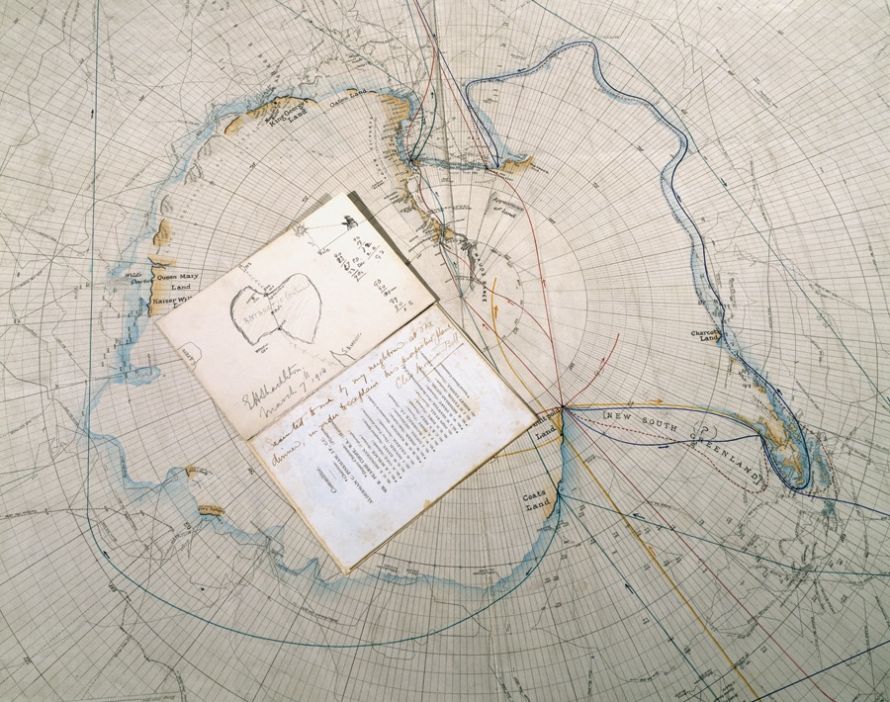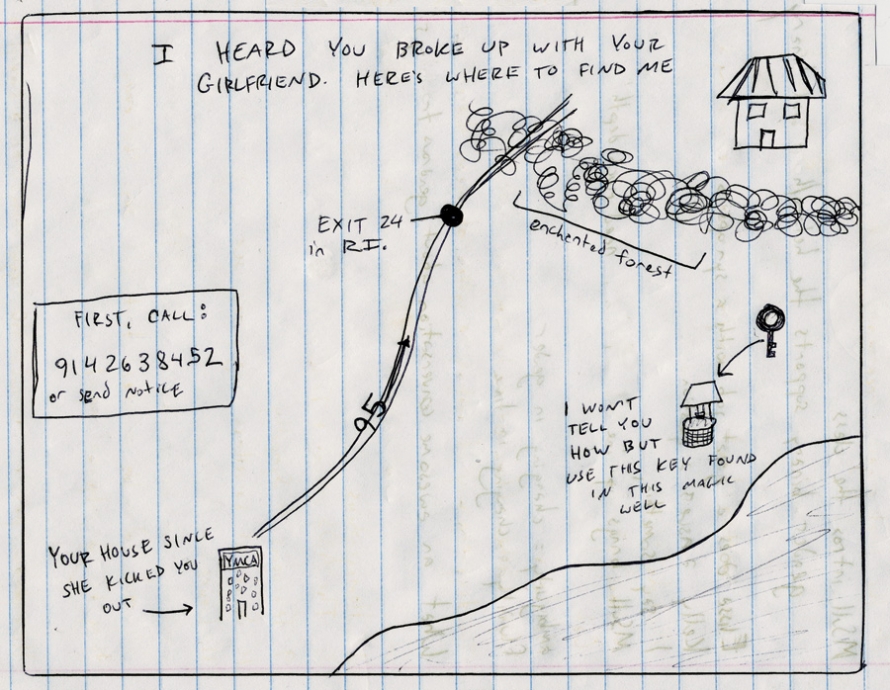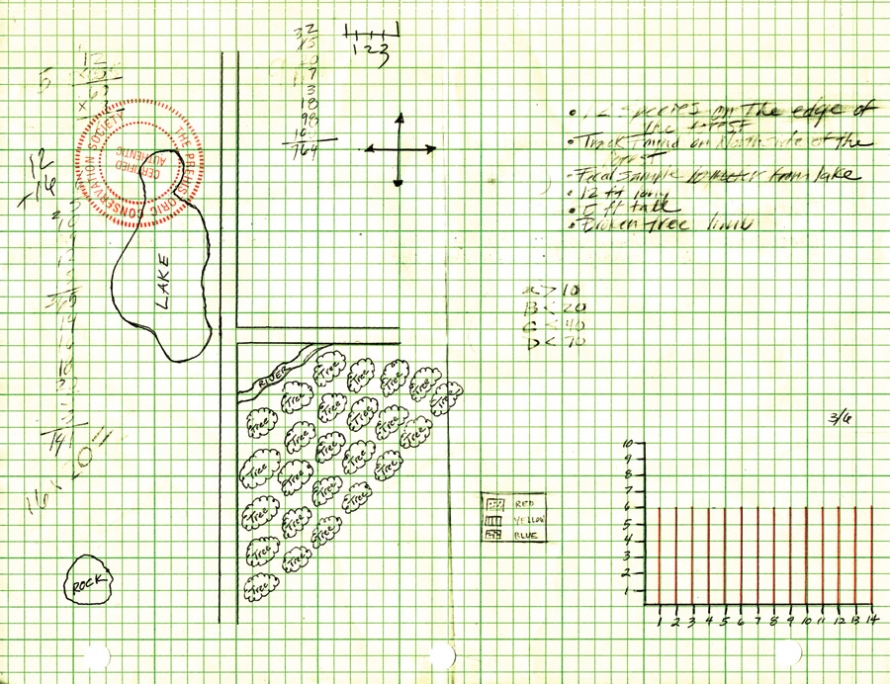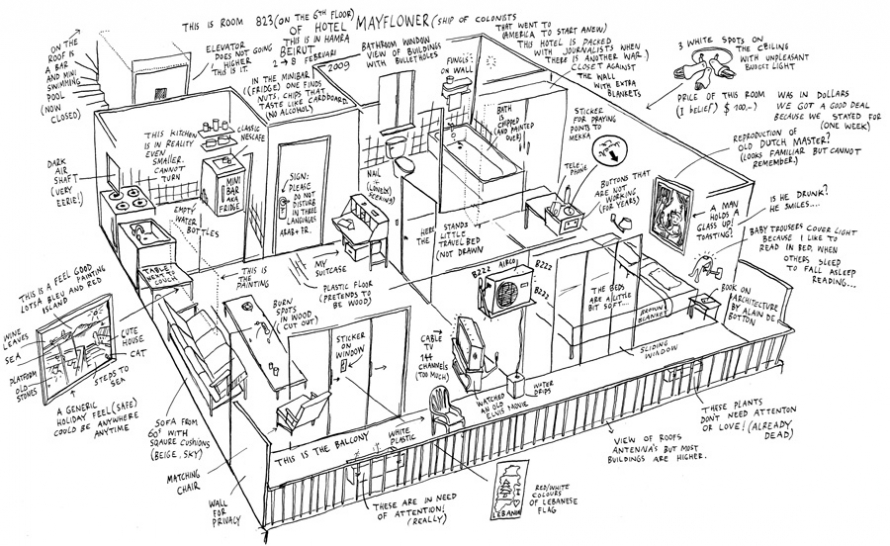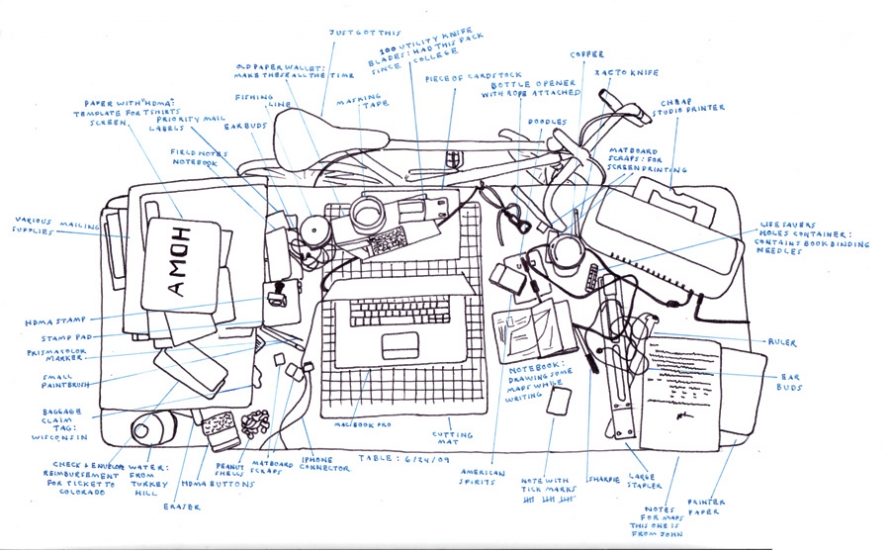From Here to There, a wonderful new book from Princeton Architectural Press, features the work of the Hand Drawn Map Association (HDMA), a repository of maps ranging from drawings of simple directions to a map by Abraham Lincoln. There are mountain-hiking guides, a guide to a woman’s injection sites while she’s suffering from disease, and a guide to a girl’s school locker. A map, it turns out, is a very elastic thing.
Designer Kris Harzinski founded the HDMA. On Wednesday, Sept. 15, Harzinski, along with the book contributors Will Haguhery and Matthew Rodriguez, will present a selection of the maps at the New York Public Library. The HDMA is also participating in an exhibition at the Pratt Manhanttan Gallery called “You Are Here: Mapping the Psychogeography of New York City” (Sept. 24, 2010 through Nov. 6). More events listed here. All images courtesy and copyright © the HDMA.
With all the maps you’ve seen submitted to the HDMA, what do you value most in a good hand-drawn map?
One of the main things I look for is an interesting story. The map, no matter how simple or complex, has to reveal something to the viewer. Perhaps it’s an overlooked detail of a well-known place or a uniquely personal adventure played out in a familiar city like New York. It might be a story of journeying, traveling, getting lost—something we can all relate to—or it might be more simple, like a map to a favorite taco restaurant. Of course, I look for interesting visual qualities as well. The paper might be particularly unique, or the way it’s drawn, an interesting mark or line, might grab my attention. There’s also a great diversity of symbolic representation. It’s interesting to note how different people represent common items like a house, a hill, or a stop light.
Has your appreciation of maps changed as the project’s grown older?
I suppose it has. I’ve encountered things I didn’t originally anticipate, like highly detailed maps of completely fictional worlds. After seeing so many different maps, perhaps the only thing that’s changed for me is allowing for a really broad view of what a map can be. The collection includes, for example, maps of the body, the sun, the internet, places encountered in dreams, a diagram for setting up a stereo system, a fictional world created by outlining coffee stains on a piece of paper, even a map of trash found on a median strip.
Many of the maps in your book appear to have little practical use to anyone but the owner, and sometimes none at all. What good is a map if it doesn’t lead anywhere? When is a map no longer a map?
The maps in the collection aren’t necessarily meant to be useful. Some of them certainly are, and that’s great, but not quite the point. In my mind, it’s more about amassing an archive of creative interpretations on pieces of paper, memories of various locations, stories of wandering, exploring, and discovering, not to help direct someone to a given location, but instead to celebrate how place can play such a powerful role in our lives.
When is a map no longer a map? It’s all about place for me. For a map to be part of the collection it has to reference some kind of location. It doesn’t have to be real, but it does have to be a place.
What’s most recent favorite map?
That’s tough to say, really. I very much enjoyed a recent map called Hiking Los Angeles. It was drawn by Sean Tejaratchi, ca. 1982, and depicts various hiking trails in Malibu Creek State Park. Sean also included some of his personal observations and memorable events while hiking at various times with his dad and friends. It’s great for all the reasons mentioned before. It has nice story—a kid exploring the mountains with his dad on the edge of a major metropolitan area. It has great visual qualities as well. It even has an edge that was chewed off by his pet hamster at one point.
Now that you’re so map-attuned, do you find maps cropping up in your own design work? Do you ever experience map fatigue?
Sure. Maps are very much a part of my work as an artist and designer, but I think that has always been there. Map fatigue? I don’t think so, but internet and email fatigue for sure.

